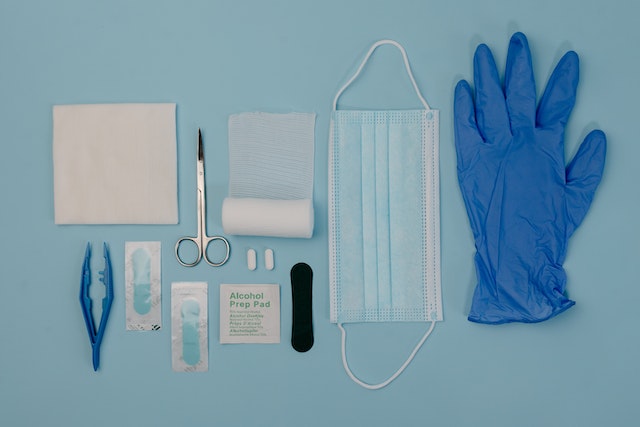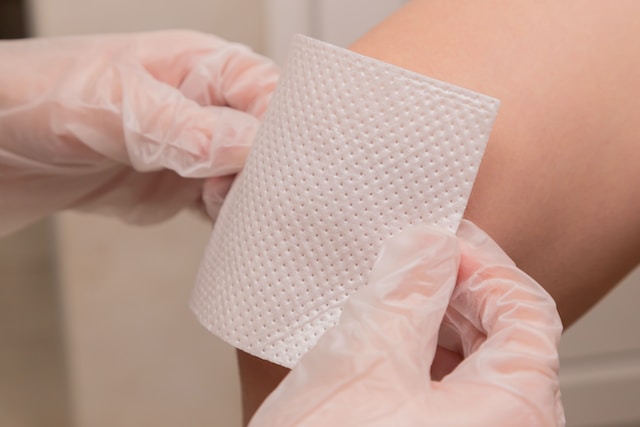Injuries are a fact of life, and we’ve all experienced the pain of a cut or scrape at one point or another. But what do you do when your injury is more than just a minor scratch? Knowing how to treat wounds properly can make all the difference in preventing infection and promoting healing. In this step-by-step guide, we’ll walk you through everything you need to know about treating wounds effectively – from cleaning the area to applying bandages and beyond. So grab some antiseptic solution and let’s get started!
What is a Wound and what Types of Wounds are There
There are many different types of wounds, but they can broadly be classified into two categories: superficial and deep. Superficial wounds only involve the surface layers of the skin, while deep wounds extend down through the dermis and may even damage underlying muscles or bone.
The most common type of superficial wound is an abrasion, which is caused by friction or rubbing. Abrasions typically look like a scrape or scratches on the skin and usually heal without any medical intervention.
The next most common type of superficial wound is a laceration, which is a deep cut or tearing of the skin. Lacerations often require stitches or other medical treatment to close the wound and prevent infection.
There are puncture wounds, which are small holes caused by something sharp penetrating the skin. Puncture wounds can be dangerous because they can easily become infected. If you have a puncture wound, it’s important to clean it thoroughly and see a doctor as soon as possible.
Basic Principles of Wound Care
If you have a wound, it is important to clean it as soon as possible. This will help prevent infection and speed up the healing process. Here are some basic principles of wound care:
1. Wash your hands with soap and water before treating the wound.
2. Gently clean the wound with mild soap and cool water. Do not use hot water or alcohol, as these can irritate the skin and delay healing.
3. Apply pressure to the wound with a clean cloth to stop any bleeding.
4. Apply an antibiotic ointment to the wound if it is deep or has debris in it. This will help prevent infection.
5. Cover the wound with a sterile adhesive bandage or wrap. Change the dressing daily or as directed by your doctor.
6. Keep the area around the wound clean and dry to prevent infection.
Sterilizing and Closing the Wound
After cleaning the wound, it is crucial to sterilize it to prevent infection. This can be done by using antiseptic solutions like Iodine or hydrogen peroxide. Once the wound is sterilized, it should be closed properly to promote healing. Depending on the size and severity of the wound, closure methods may include adhesive bandages, sutures, or staples. Properly sterilizing and closing the wound helps reduce the risk of infection, promotes healing, and minimizes scarring.
Dressings and Healing Aids for Treating Wounds
There are many different types of dressings and healing aids that can be used to treat wounds. Wound dressings are an essential component of any home pharmacy, providing the necessary protection and support for wound healing, and may include items such as sterile adhesive bandages, gauze pads, and adhesive tape. The type of wound dressing or healing aid that is best for a particular wound will depend on the location and severity of the wound. Some common dressings and healing aids include:
- Gauze pads: Gauze pads are a common type of dressing that can be used to treat wounds. They are available in various sizes and can be used to cover small or large wounds.
- Bandages: Bandages can be used to hold gauze pads in place and to provide additional support for larger wounds. Bandages come in different widths and lengths, so it is important to choose the right size for the wound being treated.
- Antibiotic ointment: Antibiotic ointment can help to prevent infection in minor cuts and scrapes. It is important to apply a thin layer of antibiotic ointment to the wound before applying a bandage or gauze pad.
- Healing cream: Healing cream can help to promote healing and relieve pain in minor cuts, scrapes, and burns. It is important to read the label carefully before using any type of healing cream, as some creams may not be suitable for certain types of wounds.
- Hydrogel dressings: Hydrogel dressings are a type of dressing that contains water. They are often used to treat partial-thickness burn.
Symptoms to Look for When Treating a Wound
When treating a wound, it is important to be aware of the potential symptoms that may arise. These can include:
- Redness around the wound
- Swelling
- Pain or tenderness
- Drainage from the wound
- Fever
If any of these symptoms occur, it is important to seek medical attention as soon as possible.
How to Prevent Infection in a Wound
In order to prevent infection in a wound, it is important to keep the wound clean and free of dirt and debris. It is also important to avoid scratching or picking at the wound, as this can introduce bacteria and cause an infection. If the wound does become infected, it is important to seek medical attention as soon as possible.

Treating a wound is not as difficult as it may seem, and if done correctly can help prevent infection and scarring. Following the steps outlined in this article should help you to treat a wound successfully. Remember that if the wound appears red or swollen, you should seek medical assistance immediately. Additionally, always keep up with proper hygiene practices to ensure your wounds heal properly from start to finish.
Lastly, be sure to take note of the location of the wound. If it is difficult to reach or in an area that you cannot monitor or cleanse easily, it is important to seek medical advice as soon as possible. With the right knowledge and tools, you can treat your wound and help it heal quickly and safely.












